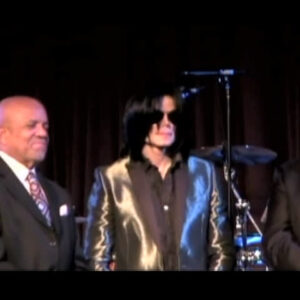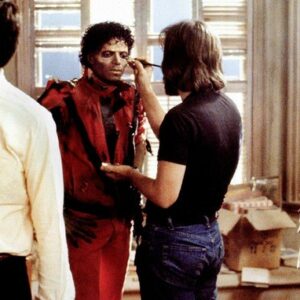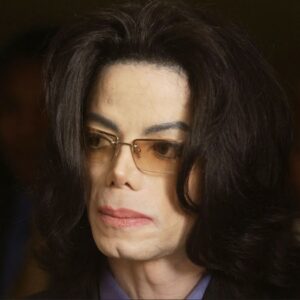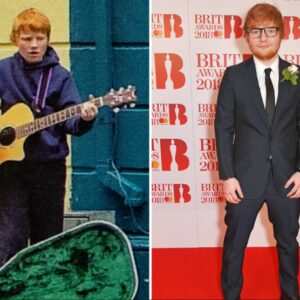In the world of music, few collaborations have captured the imagination of the public quite like the explosive and unforgettable pairing of Michael Jackson and Janet Jackson in their 1995 hit “Scream.” This dynamic video, which became a cultural touchstone in its own right, was more than just a sibling duet — it was an audacious statement about the pressures of fame, the burden of societal expectations, and the timeless pursuit of creative freedom. Directed by Mark Romanek, “Scream” broke new ground in the music video landscape, setting a benchmark for production values, visual effects, and choreography that resonates to this day. But beyond the stunning aesthetics and futuristic theme lay a powerful narrative that reflected the struggles of two of pop’s most iconic figures.
Let’s delve into what made “Scream” such a landmark moment in music history — a work of art that’s as bold and rebellious as its creators.
The Vision Behind “Scream”
It’s impossible to understand “Scream” without appreciating the vision that drove it. For both Michael and Janet, this was more than just a song; it was a rebellious cry against the world that watched their every move. Michael, in particular, had faced a torrent of scrutiny and criticism in the media in the years leading up to the release of “Scream,” following accusations and lawsuits that painted him in a negative light. The video, in many ways, was a cathartic expression of anger and frustration, a release valve for all the pressure that had built up in their lives. The message was clear: they were fighting back against the forces that sought to control, suppress, and define them.
The futuristic theme wasn’t chosen by accident. It symbolized their desire to break free from the shackles of the present — to escape into a world where they could redefine themselves on their own terms. The use of stark, sci-fi elements lent the video a cold, sterile atmosphere, reflecting the alienation they felt as megastars isolated by fame. But amid the bleakness, there was also empowerment. The Jacksons didn’t merely survive in this harsh environment; they dominated it. Every punch, every dance move, was a declaration that they were still in control of their narrative.
Janet Jackson, at the time, was riding high on the success of her solo career. Pairing with Michael brought together two colossal forces in pop music, each with their own distinct style and flair. While Michael’s signature intensity drove the song’s aggressive beats, Janet’s fierce energy added an edge that electrified the performance, creating an indelible chemistry that transcended mere choreography.
The Set Design and Technology: Pushing the Boundaries
At the heart of “Scream” was its extraordinary visual design, which required the latest in set-building and digital effects technology. The video takes place in what appears to be a spaceship or some kind of futuristic vessel, with Michael and Janet traversing its sleek, monochromatic corridors. The set design was minimalistic yet detailed, evoking a sense of both isolation and control, a metaphor for their own struggles against external forces. The walls pulsed with light, and the sleek metal surfaces gave everything a sharp, pristine edge, providing the perfect backdrop for the Jacksons to unleash their rebellion.
In many ways, “Scream” felt like a film more than a music video. And, indeed, that’s how it was approached. With a staggering $7 million budget — making it the most expensive music video ever at the time — no expense was spared in creating the cutting-edge aesthetic. Director Mark Romanek, known for his meticulous attention to detail, used state-of-the-art technology to bring the Jacksons’ vision to life. From the seamless digital effects to the intricate, custom-built sets, every element was designed to transport viewers to a world where the Jacksons reigned supreme.
The video’s space-age look wasn’t just a visual choice; it was a reflection of the era’s obsession with the future, and in many ways, it anticipated the cyberpunk aesthetic that would later dominate science fiction. The cold, metallic corridors and the glowing screens mirrored a society that was increasingly mediated by technology, a nod to the pressures that Michael and Janet were responding to. The special effects, particularly the zero-gravity sequences, were groundbreaking for their time and demonstrated how music videos could rival Hollywood blockbusters in terms of production quality.
The Energy of the Performances
As with any Michael Jackson production, the choreography in “Scream” was nothing short of electrifying. But this wasn’t just a dance video — it was a full-bodied performance that radiated fury, defiance, and determination. Michael and Janet didn’t just dance; they attacked the floor with a raw energy that matched the song’s aggressive beats. Their movements were sharp, precise, and powerful, a perfect embodiment of the song’s theme of rebellion. The choreography, designed by longtime Jackson collaborator Travis Payne, was a mix of futuristic martial arts, street dance, and classical Michael Jackson elements like the moonwalk and the iconic “anti-gravity lean.”
What made “Scream” unique, however, was the sibling dynamic between Michael and Janet. Unlike previous duets or collaborations, this wasn’t a case of one artist supporting another. Both Jacksons were equals here, playing off each other’s strengths and elevating the performance to new heights. Their synchronized movements were so in sync, it felt as though they were two sides of the same coin, perfectly attuned to each other’s rhythms. This chemistry made the video feel organic, as if they were truly feeding off each other’s energy, pushing each other to give more with every take.
Janet’s presence in the video cannot be overstated. While Michael was no stranger to intense performances, Janet brought a fiery, rebellious streak that matched her brother’s legendary intensity. Her sharp movements, fiery expressions, and commanding presence added a new dimension to the performance, making it a true collaboration rather than just a Michael Jackson vehicle with a guest appearance.
Budget and Production Costs: A New Standard
The budget for “Scream” was the stuff of legend. With a final price tag of over $7 million, it quickly earned the title of the most expensive music video ever made, a record that it still holds today. For context, that’s more than many feature films cost to produce at the time. But this wasn’t just an exercise in excess; the money was put to good use. The intricate sets, the high-tech visual effects, the custom costumes — everything was meticulously crafted to ensure that “Scream” would stand the test of time.
The sheer scale of the production was unprecedented. Hundreds of crew members worked around the clock to build the spaceship-like set, while the post-production team labored for weeks to perfect the video’s cutting-edge digital effects. Costumes were custom-made by some of the world’s top designers, and every aspect of the video, from the lighting to the sound design, was executed with an eye toward creating a futuristic, otherworldly experience.
But while the budget was astronomical, it’s worth noting that much of the cost went toward pushing the boundaries of what was possible in music video production. The use of motion capture, green screen technology, and digital compositing was cutting-edge for the time, and “Scream” helped set a new standard for music videos, showing that they could be more than just promotional tools for singles — they could be works of art in their own right.
Cultural Impact: The Legacy of “Scream”
When “Scream” debuted in 1995, it was an instant cultural phenomenon. The song itself, with its hard-hitting beats and rebellious lyrics, was a hit on the charts, but it was the video that truly captured the public’s imagination. Audiences had never seen anything like it before. The combination of stunning visuals, intense performances, and a powerful message resonated deeply with fans and critics alike. “Scream” became a symbol of resistance, a declaration that Michael and Janet were not to be underestimated or controlled.
The video’s influence can still be felt today. Its futuristic aesthetic, combined with its powerful message of defiance, set a new standard for music videos and influenced a generation of artists and directors. Many of today’s top performers, from Beyoncé to Lady Gaga, have cited “Scream” as a major influence on their work. Its impact extends beyond the music world, too, as its themes of rebellion and resistance have been embraced by activists and movements fighting against societal pressures and injustice.
But perhaps the most significant legacy of “Scream” is the way it brought Michael and Janet together in a moment of creative synergy. Though they were both massive stars in their own right, “Scream” was a reminder that together, they were unstoppable. It was a testament to their shared talent, vision, and resilience in the face of adversity, and it remains one of the most iconic music videos ever made.
Conclusion
More than two decades later, Michael and Janet Jackson’s “Scream” continues to captivate audiences with its bold visuals, electrifying performances, and powerful message. It wasn’t just a music video; it was a statement. In a time when both siblings faced immense pressure from the media and the public, they used “Scream” as a vehicle to take back control, to assert their autonomy, and to remind the world that they were not to be underestimated.
With its innovative set design, cutting-edge technology, and unforgettable choreography, “Scream” set a new standard for what a music video could be. It was, and remains, a masterpiece of visual storytelling, one that continues to inspire artists and filmmakers today. For Michael and Janet, it was a moment of triumph — a reminder that, even in the face of overwhelming pressure, they could still create something truly revolutionary.





